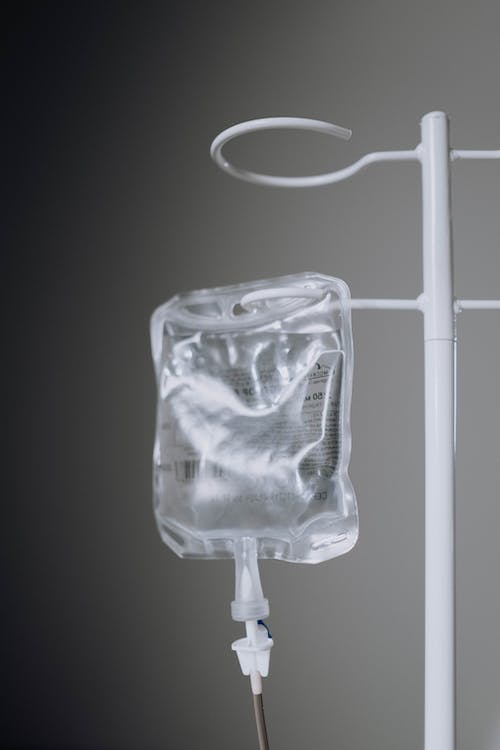
Intravenous therapy, better known as IV therapy, delivers nutrients and hydration into a person’s bloodstream for fast absorption and use by the body. This process entails quick absorption as it bypasses the digestive system and moves directly into the organs. Welcome to our introduction to IV Therapy, the best way to learn how it works.
IV therapy was first performed in 1492 when a doctor attempted to save the life of Pope Innocent VIII with a blood transfusion. Since then, it has become one of the most popular treatments in modern medicine.
The commonly used ingredients in this therapy are B vitamins, vitamin C, zinc, and calcium. In some cases, IV vitamin drips may contain antioxidants and amino acids. Let’s explore IV therapy’s processes, types, and benefits.
Process of IV Therapy
Before the therapy treatment, your doctors will evaluate your medical history. And if needed, you must undergo a blood test to ensure the correct amount of nutrients are infused into your body.
After completing the evaluation, you move onto the bright IV therapy room, where you are seated to start the treatment. A nurse or a doctor will then disinfect your skin over the area to be injected. The injection area is usually your arm, where a nurse would locate your vein and insert an IV catheter.
Once the catheter is in place, the procedure usually takes 15 to 45 minutes, depending on the type of treatment you have opted for. In the treatment process, you must relax and engage in activities such as watching TV or reading a magazine.
Different Types of IV Therapy
There are three types of IV therapy. Let’s explore the details of each type so you can choose the best option available.
- Blood Transfusion
You may receive a blood transfusion if you lose a lot of blood or your red blood cell is incredibly low. This type of transfusion is also given through an IV.
- Fluid Therapy
Fluid therapy is usually chosen in case of an accident or another tragedy, even when you have lost blood. You may receive an IV containing fluids for low blood volume in this situation. You could also get an IV to keep you hydrated if you are dehydrated or too sick.
- IV Push
A doctor will recommend an IV push when you require pain medication. This is an injection that goes into an IV catheter.
You may also get medicine like antibiotics via an IV. This is better known as a secondary additive and is beneficial to keep in the bloodstream over a certain time.
Benefits of IV Therapy
Now that you know the different types and processes of IV Therapy, let’s explore some of the benefits of this treatment.
- Helps in Rehydration
A vitamin infusion can help you rehydrate and tackle headaches and fatigue, which are signs referring to less water consumption. The treatment contains electrolytes like magnesium, calcium, and potassium, which are all crucial in keeping you hydrated.
- Enhances Your Athletic Performance
The therapy treatment is excellent for you if you are on a journey toward better fitness and health. That’s because it contains amino acids, which help in repairing cellular damage and ultimately decrease recovery time.
Plus, IV therapy increases your endurance and muscle growth, improving your athletic abilities.
- Improves Immune System
Doctors use IV therapy to boost the immune system for cancer patients. And even if you do not have any illness, you can benefit from vitamin infusion to power up your immune system. For instance, amino acids like lysine can assist in improving the healing response of your body.
- Assists in Weight Loss
IV therapy contains amino acids like arginine and carnitine that can increase your metabolism and reduce weight. The treatment also helps build muscle mass and enhance your liver function when you eat a healthy diet.
- Ideal for Healthier Skin
You may already know that vitamin C is key in keeping your skin healthy and smooth. However, it also protects you against sun damage and specific skin diseases.
As you cannot make vitamin C, an IV therapy drip with a high vitamin C dose is the best way to give your skin the care it needs.
- Reduces Nutritional Deficiencies
Suppose you are experiencing an illness such as colon cancer, cystic fibrosis, or celiac disease. In that case, it can lead to nutritional deficiencies since your digestive system cannot absorb everything it requires from your diet.
However, by bypassing your digestive system, IV therapy helps you acquire vitamin minerals, vitamins, and antioxidants.
- Supports Mental Health
IV therapy is known to improve the symptoms of anxiety or other mental disorders. That’s because nutrients like magnesium have been proven in clinical studies to decrease stress and its repercussions.
This helps you sleep peacefully at night and reduce anxiety for better mental health.
- Supplements Energy Levels
IV therapy can provide essential B vitamins and amino acids to help you feel energized and improve your mood.
- Improves Cardiovascular Health
An IV treatment contains electrolytes and arginine, such as magnesium, which are beneficial for cardiovascular health. For instance, magnesium is important for balancing normal blood pressure and ensuring a stable heartbeat.
The Bottom Line
Whether you want to regain a youthful glow, improve your energy levels, or hydrate yourself, an IV therapy treatment should be your go-to. Not only are its benefits clinically proven, but it is also the fastest way to infuse vitamins and minerals into your body.
So, get yourself a dose of IV therapy and replenish your energy levels while providing your skin with the necessary care.
Click Here to Book with us today!